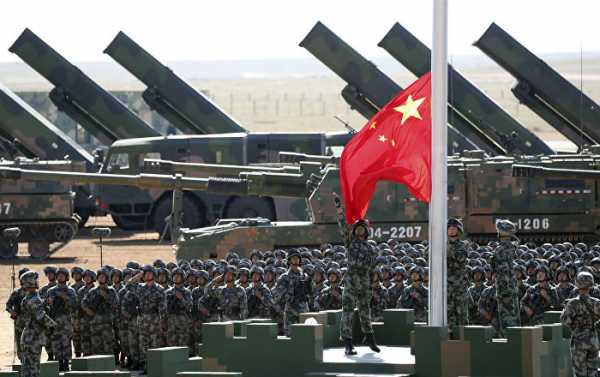
The innovative vehicle was previously tested last year, as China and India sought to reconcile over the contested border territory near Doklam, simultaneously claimed by three Asian countries, including Bhutan.
China has introduced into service its much-lauded lightweight battle tank, which the military is set to deploy in rocky areas like the Tibetan mountains, to increase its combat capabilities in the region. According to Chinese defence ministry spokesperson Senior Colonel Wu Qian, the vehicle has been handed over to troops to be further put to use.
The new-generation tank, identified as Type-15 by the People’s Liberation Army (PLA), was displayed for the first time at an exhibition last month that marked the 40th anniversary of China’s sweeping reforms, thereby demonstrating the country’s technological and military breakthrough.
Chinese media reported that the tank boasts a 105 mm gun that can fire armour-piercing shells and launch guided missiles, and is separately equipped with a hydro-pneumatic suspension system that ensures good manoeuvrability and survivability in mountainous regions.
The Type-15 tank is remarkable for its 1,000 horsepower engine and low weight as compared to the PLS’s other main battle tanks currently in service: the vehicle is 32 to 35 tonnes, which is lighter than the Type 99 tank, for instance, which may vary in weight from 54 to 58 tonnes, The South China Morning Post reported.
Beijing-based military analyst Song Zhongping said the PLA Marine Corps needed to upgrade some of its key equipment pieces, bringing up the currently used Type 62 tank, which is two times less powerful than the Type-15. “The Type 62 tank is lagging behind. The Type 15 tank has much better protection capability and manoeuvrability”, the edition quoted him as saying.
It is noteworthy that the newly-developed tank has already undergone an extensive combat exercise on the Tibetan plateau, as in June last year Chinese and Indian troops engaged in a close 73-day-long standoff at Doklam, a contested area between Tibet’s Chumbi Valley to the north, Bhutan’s Ha Valley to the east and India’s Sikkim state to the west.
At the time, Indian troops opposed the construction of a road by Chinese soldiers near the border, as it was too close to the main highway, the Chicken Neck corridor, connecting the northeast with the rest of India. The soured relationship normalised after the PLA brought the contentious road construction to an end.
Sourse: sputniknews.com






